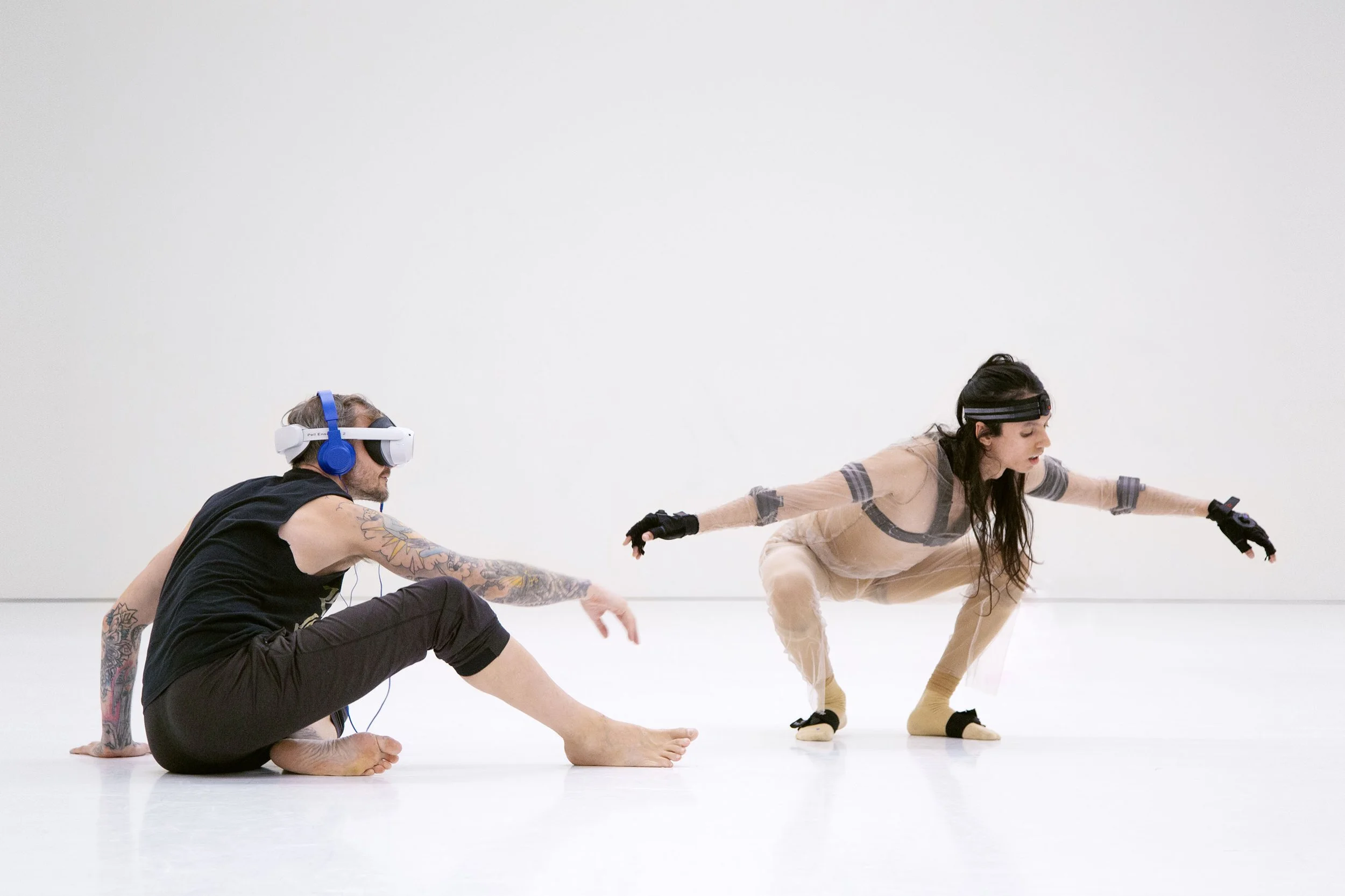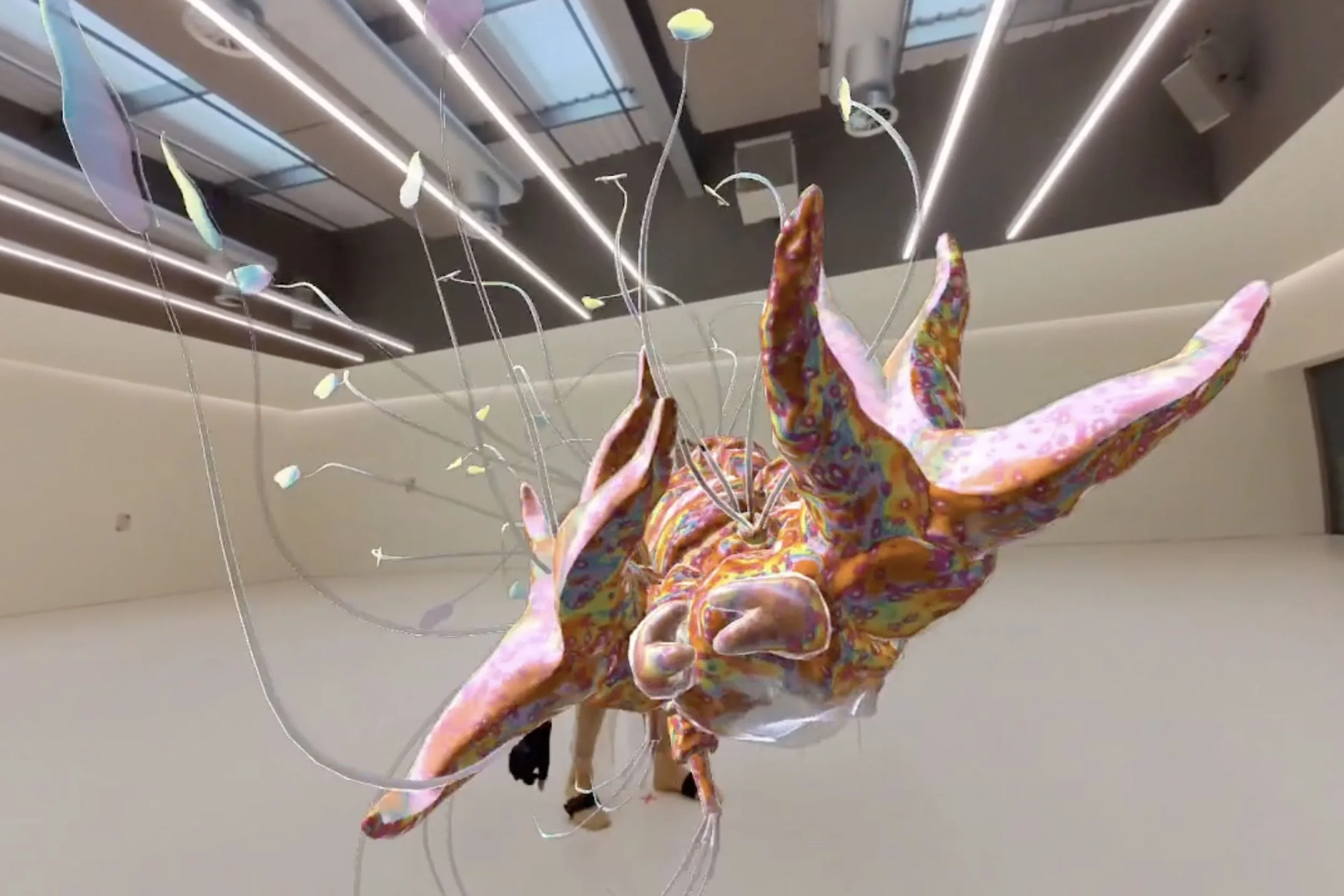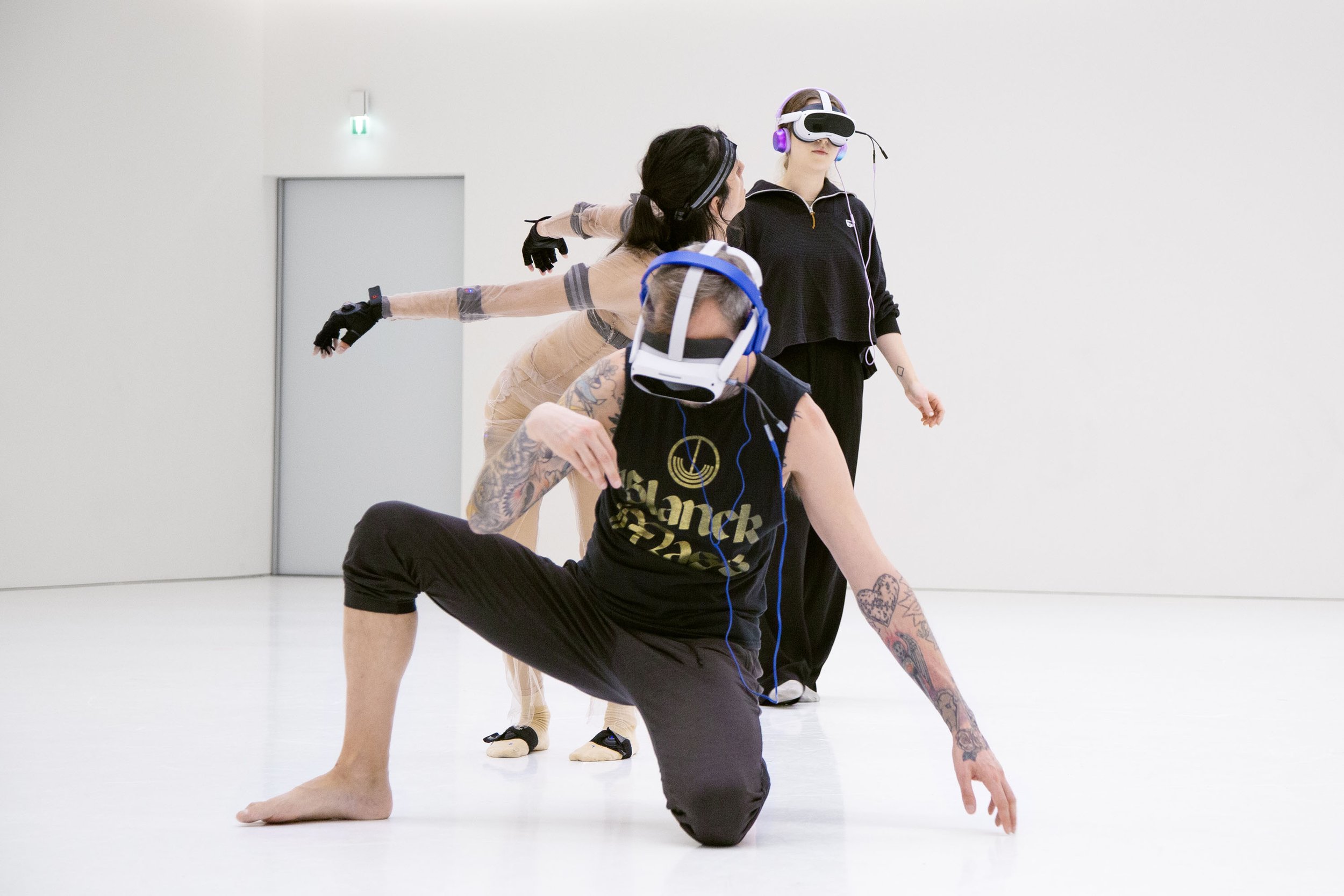Hinterlands and the Digital Extremophile: A Mixed Reality Experience
Exploring the Hinterlands
So here’s the story. I was lucky enough to be invited to a private showing of Hinterlands, a mixed reality dance work created by Rebecca Evans and collaborators as Pell Ensemble. Hosted at Studio Wayne McGregor, the event gave me an intimate opportunity to experience an ambitious performance that explores embodiment, technology, and speculation about the more-than-human world.. All things that are right up my street!
As someone fascinated by creative use of immersive technologies, who is also exploring ideas rooted in critical posthumanism within my own research, Hinterlands immediately struck a chord when I first saw a glimpse of it at a Digital Innovation Network event.
The work is built around a fascinating premise: using mixed reality and motion capture to explore speculative futures of human evolution, inspired by extremophiles, these tiny microorganisms that thrive in Earth’s most inhospitable environments (you’ve probably seen a picture of a tardigrade at some point). It’s an apt metaphor for the shifting, unstable terrain of being human in a technologically entangled world.
Over the course of 23 minutes, Hinterlands unfolds as a three-part, structured improvisation involving one live dancer and three headset-wearing audience members (though there were only two of us in my experience). Through layered choreography, spatial sound, and interactive MR visuals, the work creates a world that is simultaneously fragile, playful, and uncanny.
Image by Mira Loew from HINTERLANDS a work by Rebecca Evans/Pell Ensemble.
Immersion and Disorientation
The experience was hosted in a mostly empty white-wall studio that would become the backdrop for the mixed reality encounter.
Putting on the headset I felt a level of self-awareness. I found myself very conscious of my body and its position within the space, and of the other people in the room. Fairly quickly, that self-consciousness softened. Immersion grew not so much from a suspension of disbelief, but from an active entangling with the space. Through my exploration of the space, searching out its boundaries and it possibilities, i felt as though my body stopped being in the space and started becoming part of it.
At the heart of this experience is the technicolour digital extremophile, which in my head i refer to as The Entity. A digital being inspired by microscopic organisms, made large and vibrant in the mixed reality experience. My relationship with The Entity unfolded slowly, through observation, experimentation, and play. At first, despite my willingness to immerse myself in the experience, I found myself trying to understand its logic, test its limits and unpick the technical “how” of the experience. At some point this urge gave way to a kind of trust, a willingness to co-exist and co-move. The Entity became less a simulation to observe and more a companion. An equal partner in the space.
Image by Pell Ensemble from HINTERLANDS a work by Rebecca Evans/Pell Ensemble.
Filtering Presence
What fascinated me most was the triangulated relationship between myself, The Entity, and the dancer. The dancer’s presence, captured and transmitted through a Perception Neuron motion capture suit, felt paradoxically more distant than the digital elements. The mono pass-through of the Pico headset rendered the dancer in a subtly flattened way, removing the sense of depth perception and lending a sense of detachment that stood in stark contrast to the vibrancy of The Entity, rendered in colourful stereoscopic 3D. In this way, Hinterlands subtly inverts expectations: the human performer felt somehow spectral, uncanny even, while the digital presence felt animate, immediate, even intimate and somehow just more… THERE.
Another element of this triangulation was in the behaviour and movement of the different components. The Entity sometimes mirrored the dancer, sometimes deviated, sometimes responded to me. It wasn’t always clear who was in control, dancer as puppeteer, audience as agent, Entity as autonomous lifeform. That ambiguity felt intentional, productive and to me quite joyful. The ambiguity forming a playful way of interrogating posthuman entanglements.
Image by Mira Loew from HINTERLANDS a work by Rebecca Evans/Pell Ensemble.
Speculative Futures, Lived Now
Though I found that The Entity didn’t exactly surprise me (its behaviours were largely learnable to the part of my brain still analysing the “how”) it invited a kind of discovery rooted in embodied engagement. The space contained affordances that weren’t directly explained, only revealed through movement and curiosity (will these tentacles follow my movement? What happens if I put my head inside this bubble?). In this way, Hinterlands models a future where knowledge isn’t delivered but found, where understanding emerges from affective, spatial, and relational exploration.
Reflecting on the experience, I realise I spent more time dancing with the digital extremophile and felt more engaged with it than with the human dancer. Whether that’s a result of novelty, the affective design, or the ways our attention is shaped in MR environments, I’m not entirely sure. But what’s clear is that Hinterlands doesn’t just imagine a speculative future, it lets us live in it, even if only for 23 minutes.
In a time when we’re constantly renegotiating what it means to be human, Hinterlands offers a poetic and probing meditation on co-evolution, kinaesthetic intelligence, and the boundaries of self. It left me wondering: if we can dance with the digital now, what might we become together tomorrow?
Find out more about Hinterlands at https://www.pellensemble.com/hinterlands


